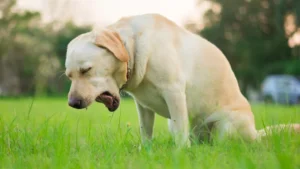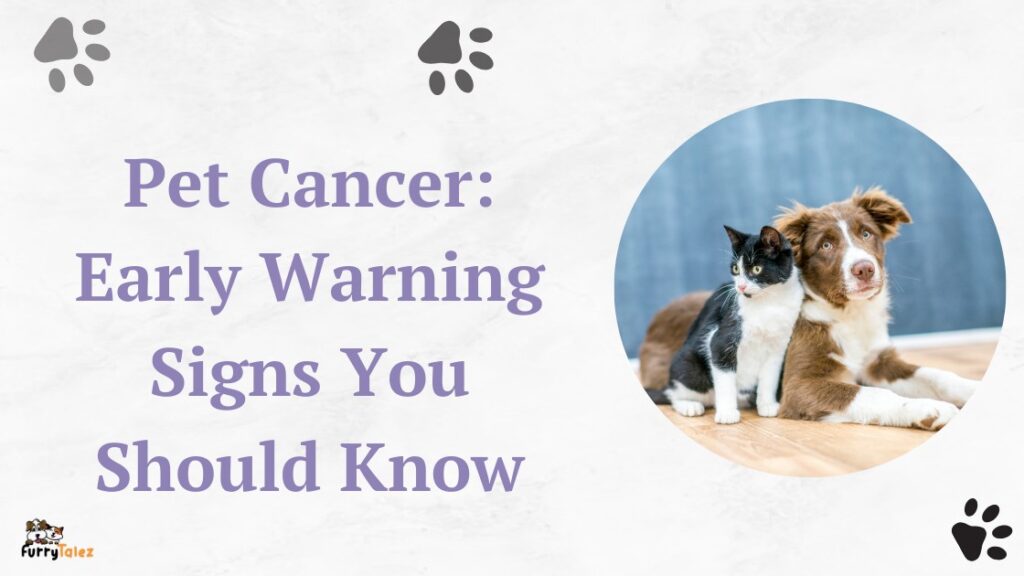Are you concerned about your pet’s health? Early detection of cancer can make a significant difference. Knowing the warning signs, such as lumps, unexplained weight loss, changes in appetite, and persistent sores, can help you act swiftly. Regular check-ups and being vigilant about your pet’s behavior and physical condition are key. Stay informed and proactive to ensure your furry friend’s well-being. Learn more about the early warning signs of pet cancer and how to protect your beloved companion.
Table of Contents
How to Recognize and Address Cancer in Pets?

If you can spot cancer in pets‘ symptoms, you could save their life. If you want your pet to be healthy, you must spot and fix medical problems quickly.
Recognizing Common Cancers in Pets

Knowing the several forms of pet cancer is one of the most crucial things you can do to raise awareness of it. Among the several forms of cancer that can be acquired are lymphoma in dogs, skin cancer, osteosarcoma (bone cancer), and squamous cell carcinoma. Diverse types of cancer have diverse symptoms depending on where the disease is located and its degree of advancedness.
Depending on their species, breed, and habitat, pets can get cancer. A malignancy infiltrating blood vessels, hemangiosarcoma, is quite deadly. Golden Retrievers often pick it up. Mast cell tumours are also relatively common in Bulldogs and Boxers. On the other hand, cats are more likely to acquire feline leukaemia, mammary gland tumours, and mouth cancer. Aware of these tendencies, pet owners can help to protect their animals from some hazards better.
Masses or lumps devoid of proper form

One of the most apparent signs your pet has cancer is a lump or tumour inappropriate for either on or under the skin. Though it’s not dangerous, you should immediately bring any new development straightforward to veterinary oncology. Early identification of malignant tumours is essential since they can quickly spread to adjacent bodily parts. It is rather scary when your dog shows cancer symptoms, including lymph node swelling or unusual blemishes. You should right away bring your dog to the veterinarian.
Certain tumours grow inside the body and may complicate the view or location of organs, including the kidneys, liver, or heart. Frequent body inspections of your pet—particularly around the neck, armpits, belly, and legs—will enable you to find any odd development.
Quick weight loss and changed appetite level

One worrying sign of cancer in pets is suddenly losing a lot of weight. Usually, this denotes that, most of the time, something is entirely wrong. Those who feed their dogs either too much or too little could lose weight when a health issue causes improper absorption of nutrients in their bodies. Often, significant red signals include changes in behaviour and appetite, such as rejecting eating or losing interest in once-choice foods.
Lumps or gastrointestinal cancers in the stomach or intestines could make it difficult for your pet to break down food. They might experience throw-back, diarrhoea, or eating difficulties. Moreover, disturbing the digestion of your pet, liver cancer can lead to quick weight loss and skin discolouration.
Note: There might be affiliate links mentioned here. We may receive a commission if you purchase a product through an affiliate link. There is no additional charge for you. Please do your own research before making any online
Constantly coughing or struggling with breathing

Another quite important clue that you might have cancer—especially in the lungs—is always needing to cough or breathe forcibly. Anyone can have lung cancer all the time; persistent coughing or difficulty breathing, wheezing, or coughing cancer that has spread to the chest, the lungs, or the heart can harm anybody. However, most people ignore these types of pet cancer signs until the disease reaches a later stage, which is terrifying enough on their own.
While dogs suffer more often from respiratory issues than cats, cats can also have these difficulties if they have tumours in their chest or snout. Should your cough continue or worsen over time, something more severe may be in process. Should your pet have trouble breathing, they may seem lazy, avoid engaging in activities, or exhibit bluish gums. They lack adequate oxygen.
Lethargy and Changes in Behavior

Should you see additional dog cancer symptoms besides lethargy, you could think they are just becoming old, but this could point to cancer. Common cancers in pets may seem or behave lethargic for no apparent reason, sleep more than usual, or lose interest in things they used to like. Pets may also alter their behaviour to show discomfort; they could hide, get agitated, or make noises upon touch.
Among the most subtle cat cancer signs are hiding more, becoming less social, or avoiding direct touch. Treat your dog similarly; they could object to family events, quit playing or stop interacting with you.
Treatment Options for Pet Cancer

Should your pet be cancerous, you should be aware of the numerous treatment options for pet cancer and modalities to help you make a wise choice. The type and stage of the cancer in your pet will define the many cancer treatments veterinary oncology offers. People routinely use surgery, chemotherapy, radiation therapy, and medicines to treat cancer in dogs and improve their quality of life.
It will all depend on the type of cancer you have, your pet’s general state, and the course of therapy as well. Surgery may be used to eliminate little lumps, for example. Radiation and chemotherapy, on the other hand, eliminate spread-out cancer cells.
Conclusion
Pets can have cancer, so looking at pet health is very important. Though it’s frightening, early knowledge of pet cancer can significantly impact their quality of life. If you notice lumps or masses that don’t seem right, sudden weight loss, coughing or trouble breathing, or persistent tiredness—that counts most—you can make sure your pet gets the required treatment. Early cancer detection for your pet will depend on regular veterinary appointments and careful monitoring of its condition. This suggests that you should choose a better remedy and receive better outcomes. Know what to look for should you think your pet has cancer. It can save their life and enable many more happy, healthy years with them. You can count on FurryTalez to help you through every step of your pet’s cancer path with care and understanding.
FAQs
What are the common early warning signs of pet cancer?
Look for lumps, unexplained weight loss, changes in appetite, and persistent sores.
How often should I check my pet for signs of cancer?
Regularly check your pet’s body for any unusual lumps or sores, especially during grooming sessions.
What should I do if I find a lump on my pet?
Consult your veterinarian for an evaluation and possible biopsy to determine if the lump is benign or malignant.
Can early detection of pet cancer improve treatment outcomes?
Yes, early detection can significantly improve the chances of successful treatment and recovery.
Are there any specific breeds more prone to cancer?
Certain breeds, such as Boxers, Golden Retrievers, and Beagles, have a higher risk of developing cancer.












